Scholar Victoria Syllabus Wiki
(→Scholar Victoria's Meyer Specific Syllabus) |
|||
| (88 intermediate revisions by one user not shown) | |||
| Line 1: | Line 1: | ||
| − | |||
| − | + | = [[Techniques|Techniques and Terminology]] = | |
| − | + | == 16th Century: Meyer's Art of Combat == | |
| + | This section contains a breakdown and interpretation of techniques from the 1570 and 1568 texts. This covers all five of the core weapon groups used in Meyer's system, as well as a set of core principles which include footwork, fencing principles and concepts, and other fundamentals. | ||
| − | + | ====[[Fundamental Knowledge]]==== | |
| − | The | + | [[File:BackWeighted.jpg | 150 px]] The basics of Meyer's system, including common terminology across his weapons, postures, and footwork. |
| + | ====[[Longsword | Meyer's Longsword]]==== | ||
| − | + | [[File:ZwerchGrab.png | 150 px]] A synthesis of the Longsword section of Meyer's 1570 text. | |
| − | + | ====[[Dussack]]==== | |
| − | + | ||
| − | + | [[File:MeyerDussackWeckerhauw2.jpg | 150 px]] Key elements of Meyer's Dussack texts including elements of the Lund and 1570 manuscripts. | |
| − | + | ||
| − | + | ====[[Rappier]]==== | |
| − | + | ||
| − | + | [[File: MeyerRappierLongpointGuard.jpeg | 150 px]] The sidesword of Meyer drawing on multiple sources, focusing on defining the elements of the style. | |
| − | + | ||
| − | + | ||
| − | + | ====[[Dagger and Wrestling]]==== | |
| − | + | ||
| − | + | [[File: MeyerArmBar2.png | 150 px]] Dagger and wrestling techniques taken from the 1570 text. | |
| − | + | ||
| − | + | ||
| − | + | ====[[Polearms]]==== | |
| − | + | ||
| − | + | [[File: Staff middleguard.jpg| 150 px]] Staff and Halberd techniques from 16th century sources. The pike section of Meyer is currently not included. | |
| − | + | ||
| − | ' | + | == 15th Century: Liechtenauer Glosses == |
| − | + | This section contains a interpretations and concepts found in the glosses of Liechtenauer Zedel, including Pseudo von Danzig, Ringeck, Lew, and others. | |
| + | ====[[Early Longsword | Liechtenauer's Longsword]]==== | ||
| + | [[File:Ochs and pflug 2.png| 100px]] A breakdown of the common sections of the glosses of Liechtenauer's markverse. | ||
| − | + | ==Other Fencing styles== | |
| − | + | This section contains other styles outside the Liechtenauer tradition. | |
| − | == | + | ====[[Hutton Sabre]]==== |
| − | + | ||
| − | [[ | + | [[File:HuttonUnderStopThrust.png | 150 px]] The late 19th century sabre system of Alfred Hutton. |
| + | = Scholar Victoria's [[Meyer Specific Syllabus]] = | ||
| − | [[ | + | [[File:RANKS.png|500px]] |
| − | [[ | + | This is the grading syllabus for our classes on Meyer. |
| + | |||
| + | This syllabus is purely motivated by a need to ensure a consistent level of knowledge of the system. The system itself doesn't demonstrate fighting ability, and is not a mark of superiority in the class. It exists to recognise the hard work people put in to learning the background and techniques of their style. | ||
| + | |||
| + | * [[Neuling]] | ||
| + | * [[Lehrling]] | ||
| + | * [[Fechter]] | ||
| + | * [[Freifechter]] | ||
| + | |||
| + | Specific techniques for each level can be found here: | ||
| + | |||
| + | * [[Table of Techniques]] | ||
Latest revision as of 05:41, 26 September 2018
Contents |
[edit] Techniques and Terminology
[edit] 16th Century: Meyer's Art of Combat
This section contains a breakdown and interpretation of techniques from the 1570 and 1568 texts. This covers all five of the core weapon groups used in Meyer's system, as well as a set of core principles which include footwork, fencing principles and concepts, and other fundamentals.
[edit] Fundamental Knowledge
![]() The basics of Meyer's system, including common terminology across his weapons, postures, and footwork.
The basics of Meyer's system, including common terminology across his weapons, postures, and footwork.
[edit] Meyer's Longsword
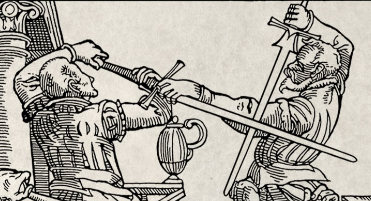 A synthesis of the Longsword section of Meyer's 1570 text.
A synthesis of the Longsword section of Meyer's 1570 text.
[edit] Dussack
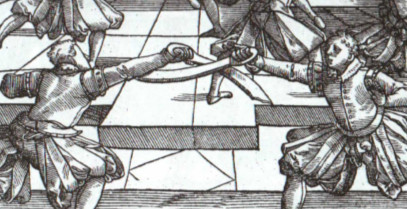 Key elements of Meyer's Dussack texts including elements of the Lund and 1570 manuscripts.
Key elements of Meyer's Dussack texts including elements of the Lund and 1570 manuscripts.
[edit] Rappier
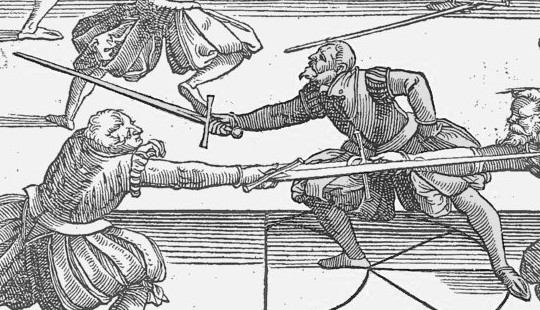 The sidesword of Meyer drawing on multiple sources, focusing on defining the elements of the style.
The sidesword of Meyer drawing on multiple sources, focusing on defining the elements of the style.
[edit] Dagger and Wrestling
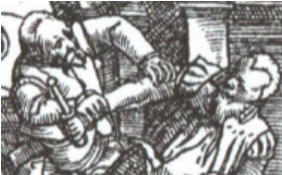 Dagger and wrestling techniques taken from the 1570 text.
Dagger and wrestling techniques taken from the 1570 text.
[edit] Polearms
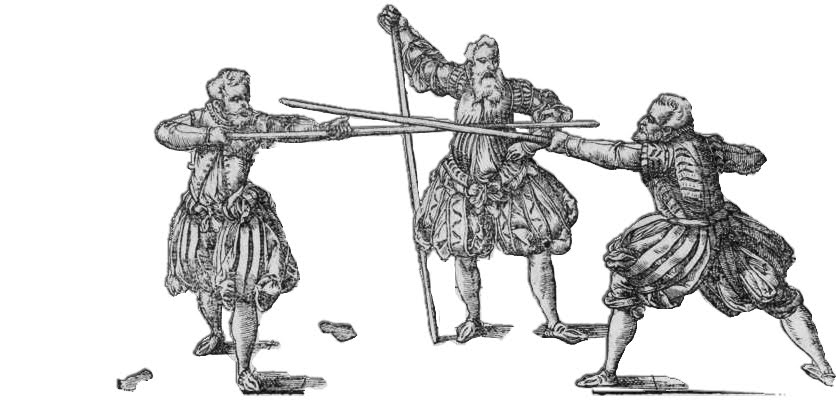 Staff and Halberd techniques from 16th century sources. The pike section of Meyer is currently not included.
Staff and Halberd techniques from 16th century sources. The pike section of Meyer is currently not included.
[edit] 15th Century: Liechtenauer Glosses
This section contains a interpretations and concepts found in the glosses of Liechtenauer Zedel, including Pseudo von Danzig, Ringeck, Lew, and others.
[edit] Liechtenauer's Longsword
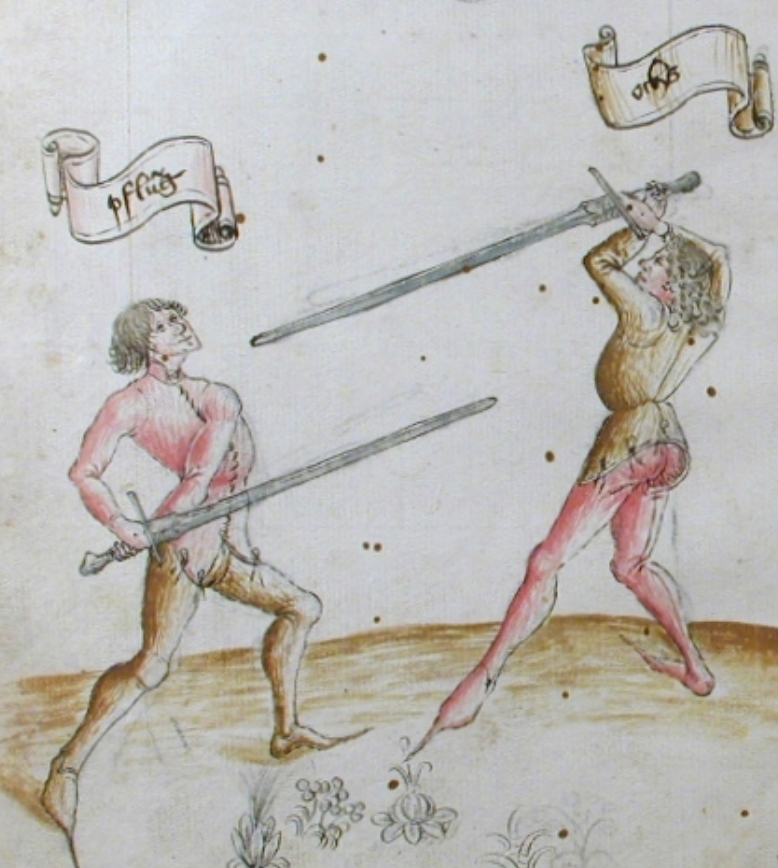 A breakdown of the common sections of the glosses of Liechtenauer's markverse.
A breakdown of the common sections of the glosses of Liechtenauer's markverse.
[edit] Other Fencing styles
This section contains other styles outside the Liechtenauer tradition.
[edit] Hutton Sabre
 The late 19th century sabre system of Alfred Hutton.
The late 19th century sabre system of Alfred Hutton.
[edit] Scholar Victoria's Meyer Specific Syllabus
This is the grading syllabus for our classes on Meyer.
This syllabus is purely motivated by a need to ensure a consistent level of knowledge of the system. The system itself doesn't demonstrate fighting ability, and is not a mark of superiority in the class. It exists to recognise the hard work people put in to learning the background and techniques of their style.
Specific techniques for each level can be found here:
